
Cabo San Lucas: A Paradise on the Baja Peninsula
Discover Cabo San Lucas: A sun-soaked paradise offering pristine beaches, incredible marine life, and a vibrant nightlife on the stunning Baja California Peninsula.
Cabo San Lucas, often simply referred to as 'Cabo,' is a vibrant city located at the southern tip of Mexico's Baja California Peninsula. It is renowned for its stunning beaches, crystal-clear waters, and vibrant nightlife. The city is a perfect blend of natural beauty and modern luxury, making it a top destination for travelers seeking both relaxation and adventure. Visitors to Cabo San Lucas can explore its famous landmarks such as El Arco, a stunning rock formation at Land's End, where the Pacific Ocean meets the Sea of Cortez. The city's beaches, like Playa del Amor and Playa Medano, offer pristine sands and excellent opportunities for water sports, including snorkeling, diving, and deep-sea fishing. For those interested in marine life, whale watching tours are a must, especially during the winter months when humpback whales migrate to the region. Beyond its natural attractions, Cabo San Lucas boasts a lively downtown area filled with shops, restaurants, and bars. The Marina is a hub of activity, where visitors can enjoy fresh seafood, embark on boat tours, or simply take a leisurely stroll along the waterfront. The city's nightlife is legendary, with numerous venues offering live music, dancing, and entertainment until the early hours of the morning. Whether you're looking to unwind on the beach, explore the underwater world, or dance the night away, Cabo San Lucas offers something for everyone.
Local tips in Cabo San Lucas
- Visit El Arco early in the morning to avoid crowds and get the best photos.
- Bring cash; many local vendors and smaller establishments may not accept credit cards.
- Stay hydrated and use sunscreen; the sun in Cabo can be very strong.
- Book whale watching tours in advance, especially during peak season (December to April).
- Explore beyond the tourist areas for authentic local cuisine and culture.
- Consider renting a car if you plan to explore the surrounding areas and beaches.
Cabo San Lucas: A Paradise on the Baja Peninsula
Cabo San Lucas, often simply referred to as 'Cabo,' is a vibrant city located at the southern tip of Mexico's Baja California Peninsula. It is renowned for its stunning beaches, crystal-clear waters, and vibrant nightlife. The city is a perfect blend of natural beauty and modern luxury, making it a top destination for travelers seeking both relaxation and adventure. Visitors to Cabo San Lucas can explore its famous landmarks such as El Arco, a stunning rock formation at Land's End, where the Pacific Ocean meets the Sea of Cortez. The city's beaches, like Playa del Amor and Playa Medano, offer pristine sands and excellent opportunities for water sports, including snorkeling, diving, and deep-sea fishing. For those interested in marine life, whale watching tours are a must, especially during the winter months when humpback whales migrate to the region. Beyond its natural attractions, Cabo San Lucas boasts a lively downtown area filled with shops, restaurants, and bars. The Marina is a hub of activity, where visitors can enjoy fresh seafood, embark on boat tours, or simply take a leisurely stroll along the waterfront. The city's nightlife is legendary, with numerous venues offering live music, dancing, and entertainment until the early hours of the morning. Whether you're looking to unwind on the beach, explore the underwater world, or dance the night away, Cabo San Lucas offers something for everyone.
When is the best time to go to Cabo San Lucas?
Iconic landmarks you can’t miss
The Arch of Cabo San Lucas
Experience the stunning natural beauty of The Arch of Cabo San Lucas, an iconic landmark and a must-visit destination for every traveler in Baja California.
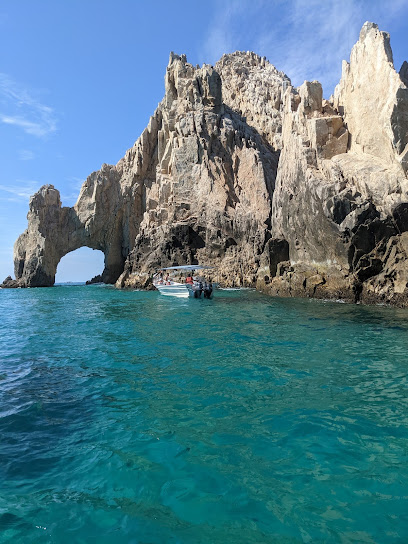
Plaza Mijares
Experience the vibrant culture and artistic charm of Plaza Mijares in San José del Cabo, a must-visit destination for every traveler.
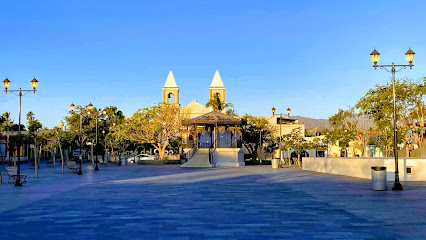
Villa Del Palmar Beach Resort & Spa Cabo San Lucas
Experience luxury and relaxation at Villa Del Palmar Beach Resort & Spa Cabo San Lucas, your perfect escape in Baja California Sur.
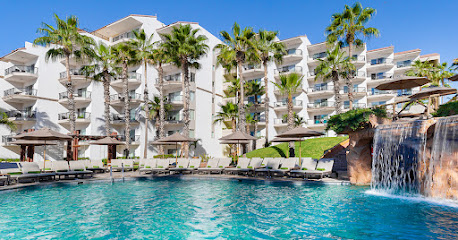
Plaza Bonita
Discover the vibrant shopping, dining, and cultural experiences at Plaza Bonita in Cabo San Lucas, a must-visit destination for every traveler.
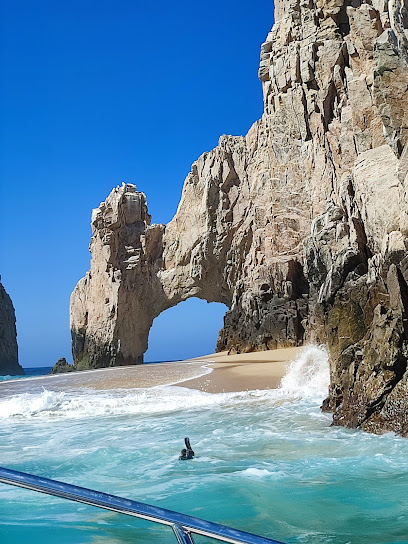
Envatours Cabo
Explore Cabo San Lucas with Envatours: Unforgettable boat tours, SCUBA diving, and thrilling whale watching adventures await!
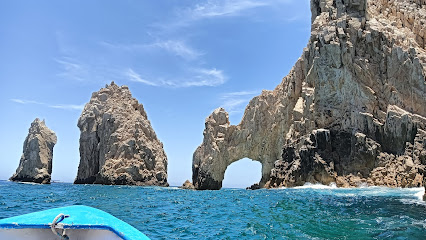
Casa Dorada Resort & Spa
Experience the epitome of luxury at Casa Dorada Resort & Spa, where breathtaking ocean views and unparalleled service create a perfect getaway in Cabo San Lucas.

Cultural Pavilion of the Republic
Discover the rich cultural heritage of Cabo San Lucas at the Cultural Pavilion of the Republic, where art meets history in a stunning architectural setting.
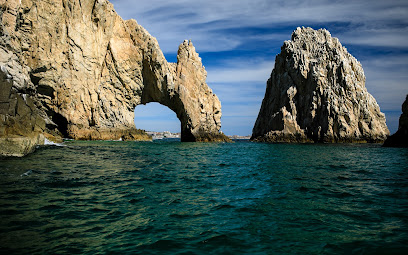
Cabo San Lucas Cruise Port
Discover the vibrant beauty and adventure waiting at Cabo San Lucas Cruise Port, your gateway to the stunning landscapes of Baja California Sur.
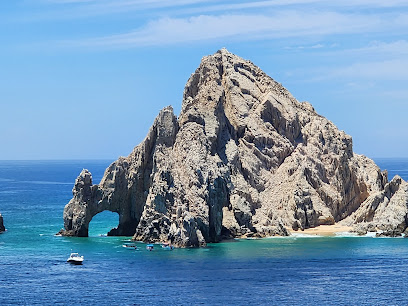
Cerro de la Z
Explore the stunning Cerro de la Z observation deck in Cabo San Lucas for breathtaking panoramic views of the Pacific coastline and iconic rock formations.

Cabo Blue Boat
Discover the breathtaking beauty of Cabo San Lucas with Cabo Blue Boat's unforgettable tours, perfect for adventure seekers and nature lovers alike.
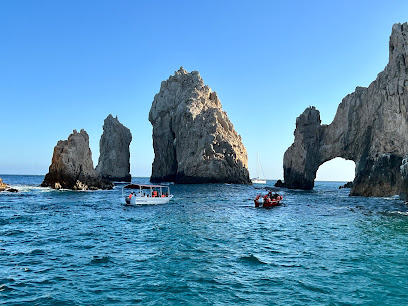
Whale Watch Cabo
Experience the thrill of whale watching in Cabo San Lucas with Whale Watch Cabo, where unforgettable marine adventures await you amidst stunning ocean views.
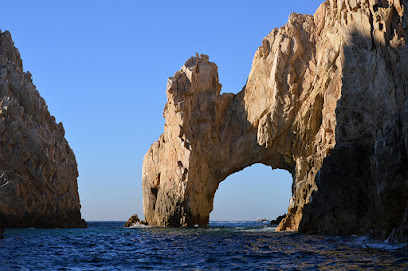
Museum of Natural History in Cabo San Lucas
Explore the rich biodiversity of Baja California at the Museum of Natural History in Cabo San Lucas, an engaging experience for all ages.
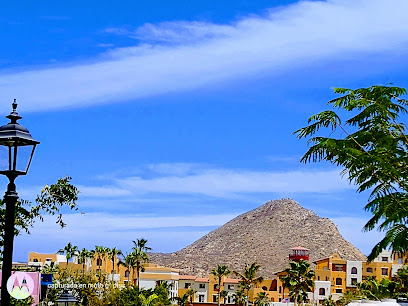
East Cape Beach
Experience the untouched beauty of East Cape Beach in Cabo San Lucas, a paradise for beach lovers and adventure seekers alike.
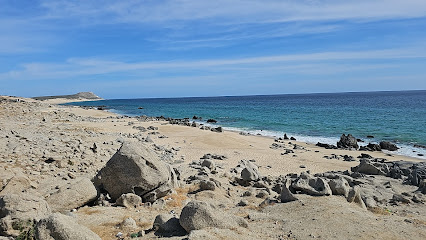
Sea Cabo Activities
Discover thrilling water sports and captivating marine adventures at Sea Cabo Activities in the beautiful Cabo San Lucas.

Mt. Solmar
Discover stunning views and diverse wildlife at Mt. Solmar, a premier hiking destination in Cabo San Lucas offering unforgettable outdoor adventures.
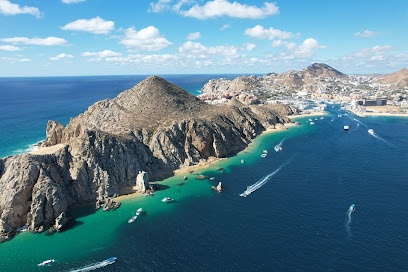
Unmissable attractions to see
El Arco
Explore the natural beauty of El Arco in Cabo San Lucas, a stunning rock formation and a top landmark for breathtaking views and unforgettable experiences.
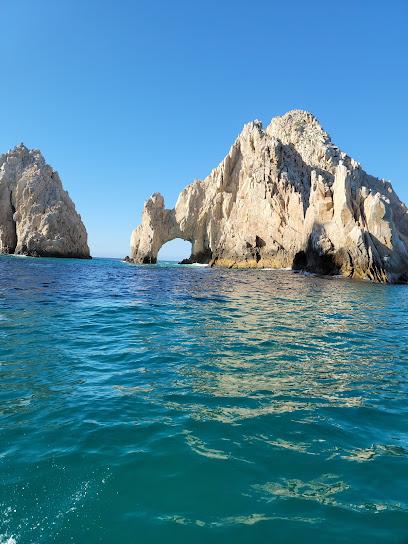
Cabo Adventures
Explore Cabo San Lucas with Cabo Adventures: thrilling boat tours, scuba diving, and unforgettable whale-watching experiences await you in this coastal paradise.
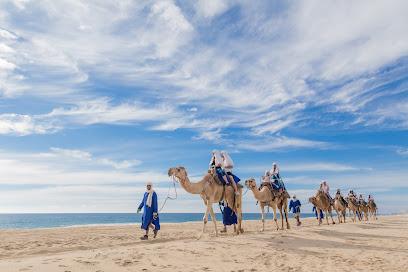
Plaza Mijares
Discover the vibrant Plaza Mijares in San José del Cabo, a cultural hub with local art, dining, and picturesque views that reflect the charm of Baja California Sur.
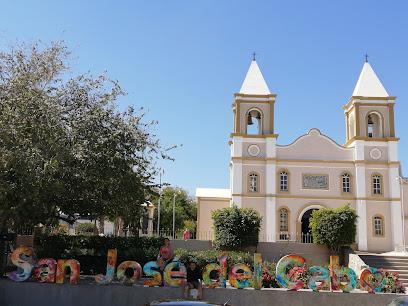
Chileno Bay Public Beach
Experience the breathtaking beauty of Chileno Bay Public Beach, a serene haven for relaxation and snorkeling in Baja California Sur, Mexico.
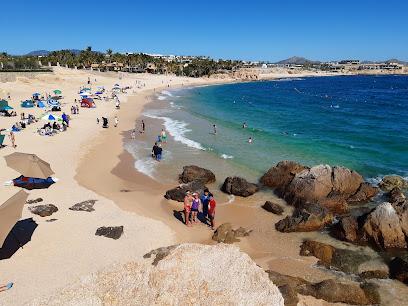
Diamante Cabo San Lucas
Discover the luxurious charm of Diamante Cabo San Lucas, where world-class golf meets tropical paradise in Baja California Sur.
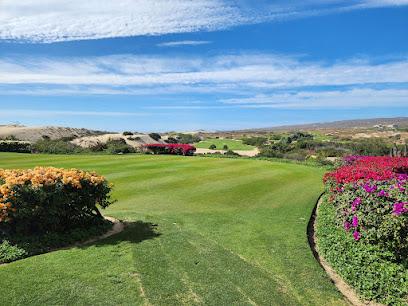
Cinemex Puerto Paraíso
Experience the latest films in style at Cinemex Puerto Paraíso while enjoying the vibrant atmosphere of Cabo San Lucas.

Costa Azul Beach
Experience the beauty of Costa Azul Beach in San José del Cabo, a perfect destination for sunbathing, surfing, and savoring local cuisine.
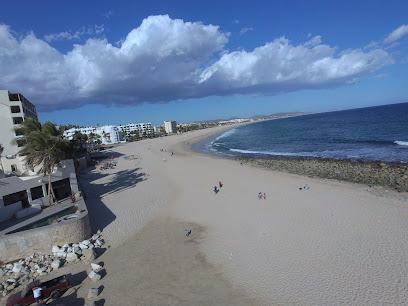
Estero San José
Discover the serene beauty of Estero San José, a nature preserve in San José del Cabo, perfect for nature lovers and birdwatching enthusiasts.
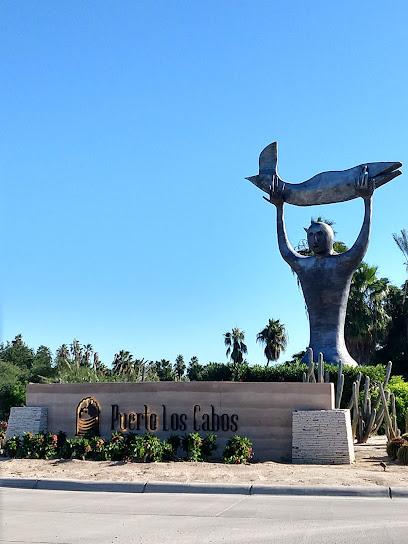
Wild Canyon Adventures
Discover the thrill of adventure amidst the stunning landscapes of San José del Cabo at Wild Canyon Adventures, a hub for outdoor excitement and nature exploration.
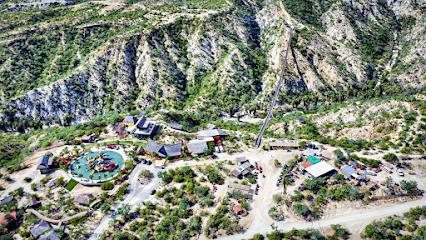
Cabo del Sol
Experience the ultimate blend of luxury and leisure at Cabo del Sol, where world-class golfing meets breathtaking coastal views in Cabo San Lucas.
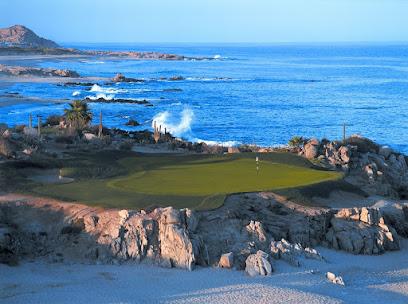
Playa Pública Cabo San Lucas
Embrace the beauty of Cabo San Lucas at Playa Pública, a stunning beachfront destination perfect for relaxation and adventure under the sun.
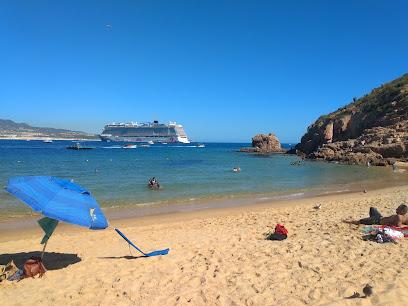
Palmilla Beach
Explore the breathtaking beauty of Palmilla Beach in Baja California Sur, a serene destination perfect for relaxation and adventure on the golden sands.
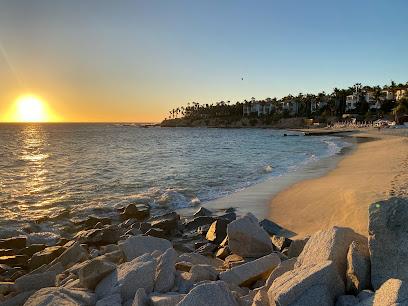
El Medano Beach
Explore the vibrant El Medano Beach in Baja California Sur, where stunning views, exciting water activities, and delicious local cuisine await.

G-Force Adventures
Experience the thrill of off-roading and breathtaking sightseeing in Cabo San Lucas with G-Force Adventures, your go-to ATV rental and tour agency.
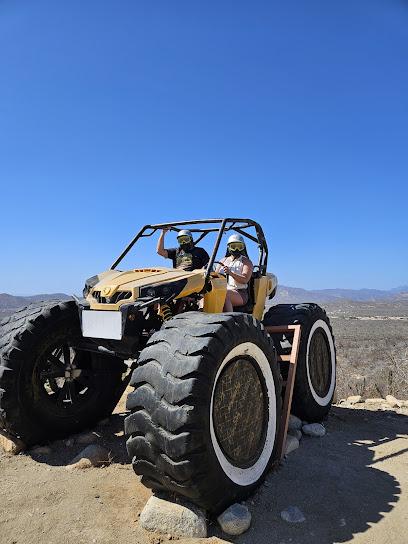
Cabo San Lucas Cruise Port
Discover the vibrant Cabo San Lucas Cruise Port, your gateway to breathtaking adventures, local culture, and unforgettable experiences in Baja California Sur.
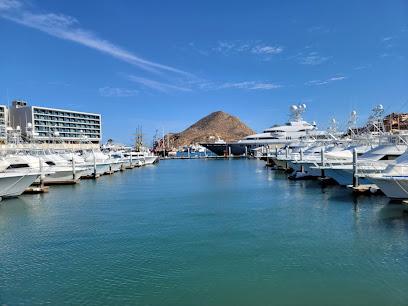
Essential places to dine
The Office on the Beach
Experience authentic Mexican cuisine and stunning ocean views at The Office on the Beach in Cabo San Lucas.
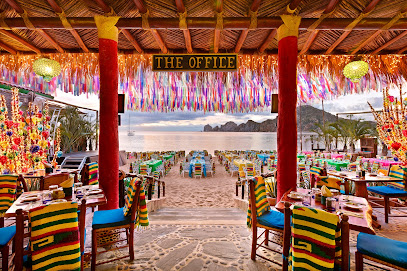
Campestre
Discover authentic Mexican flavors at Campestre in Cabo San Lucas—where vibrant cuisine meets warm hospitality.
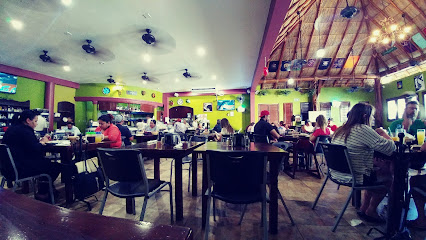
Salvatore G's
Experience authentic Italian cuisine at Salvatore G's in Cabo San Lucas - where every dish tells a story.
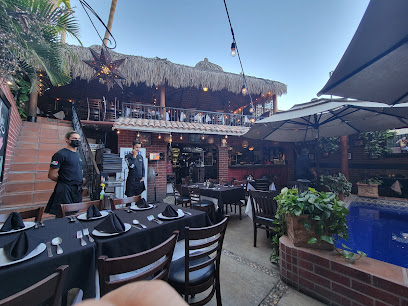
Captain Tony's
Experience fresh seafood delights at Captain Tony's in Cabo San Lucas - where every bite tells a story of local flavor.
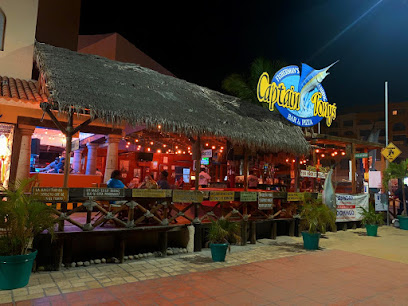
Romeo & Julieta
Savor authentic Italian cuisine at Romeo & Julieta in Cabo San Lucas - home of exquisite pizzas and pastas.

Los Tres Gallos
Discover authentic Mexican flavors at Los Tres Gallos in Cabo San Lucas - where every meal is a celebration of tradition.

Edith's
Experience authentic Mexican flavors at Edith's in Cabo San Lucas—where exquisite cuisine meets breathtaking ambiance.
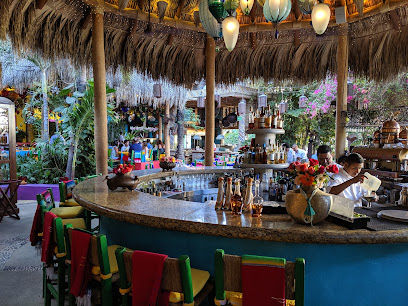
Mi Casa
Discover the vibrant flavors and warm hospitality at Mi Casa in Cabo San Lucas – where every meal is a celebration of Mexican culture.
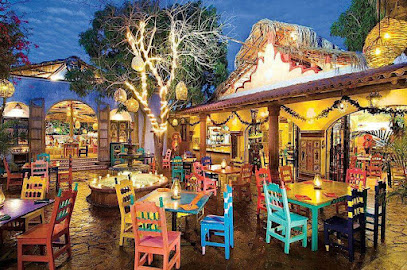
SUR Beach House
Experience culinary excellence at SUR Beach House in Cabo San Lucas, where stunning ocean views meet exquisite seafood dining.
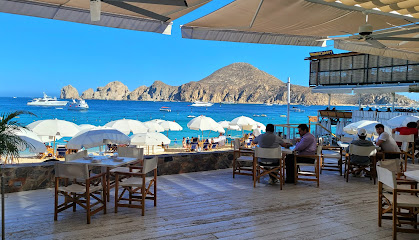
El Peregrino
Discover the authentic flavors of Mexico at El Peregrino - where traditional cuisine meets coastal charm in Cabo San Lucas.
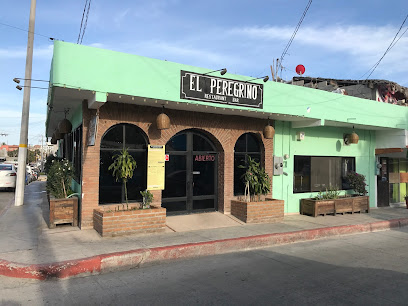
Outpost
Discover Outpost in Cabo San Lucas - where fresh flavors meet vibrant nightlife in an unforgettable dining experience.
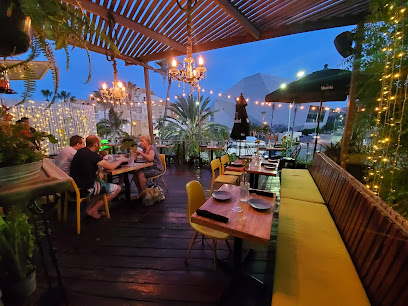
Solomon's Landing Los Cabos
Discover exceptional seafood and authentic Mexican cuisine at Solomon's Landing in Cabo San Lucas' picturesque marina.
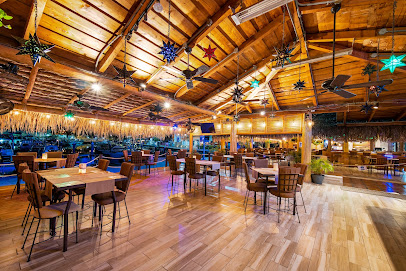
Hacienda Cocina y Cantina
Experience authentic Mexican flavors with breathtaking ocean views at Hacienda Cocina y Cantina in Cabo San Lucas.
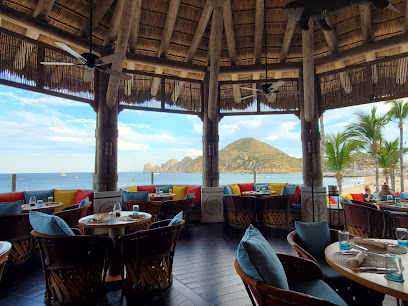
Metate Cabo
Experience authentic Mexican cuisine at Metate Cabo—your go-to spot for breakfast and brunch in stunning Cabo San Lucas.
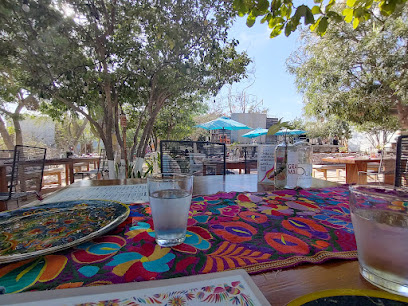
Restaurante Maria Corona
Discover the heart of Mexico at Restaurante Maria Corona—where authentic flavors meet vibrant culture in Cabo San Lucas.

Markets, malls and hidden boutiques
Plaza Puerto Paraiso
Experience the best shopping, dining, and art galleries at Plaza Puerto Paraiso in Cabo San Lucas, a vibrant destination for every traveler.
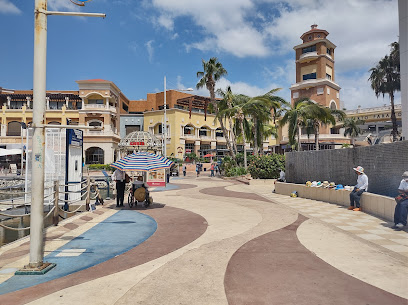
Patio Los Cabos
Discover a shopping haven at Patio Los Cabos, where diverse stores meet delightful dining in the heart of Cabo San Lucas.
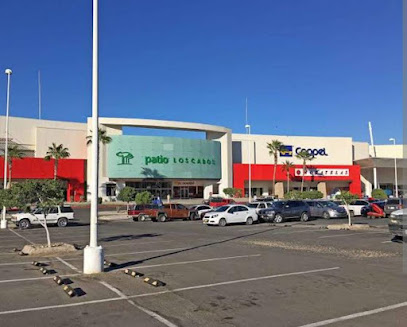
Plaza Bonita
Discover a vibrant shopping experience at Plaza Bonita in Cabo San Lucas, where local culture meets international flair in the heart of Baja California Sur.
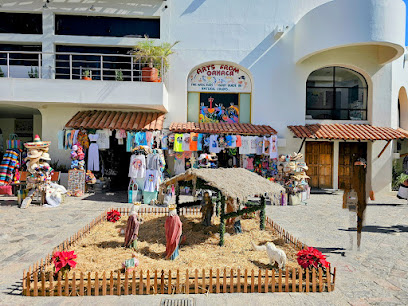
Luxury Avenue Los Cabos
Discover the epitome of luxury shopping at Luxury Avenue Los Cabos, where high-end brands meet a stunning marina view.
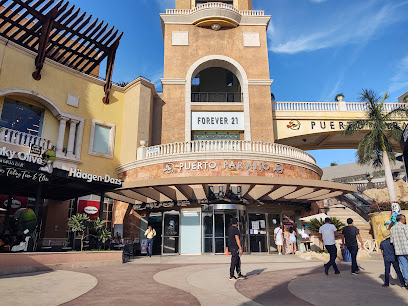
Caboland
Discover the vibrant shopping experience at Caboland, your go-to destination for unique clothing and local souvenirs in Cabo San Lucas.
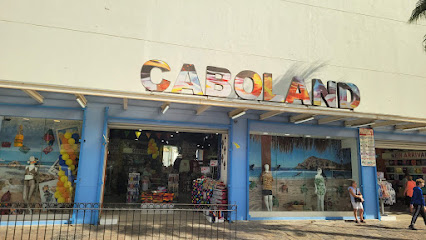
La Coyota
Explore La Coyota in Cabo San Lucas for unique artistic handicrafts that celebrate Mexico's rich cultural heritage.

Back to the Rack Cabo San Lucas
Explore Back to the Rack in Cabo San Lucas for unique consignment treasures and sustainable fashion finds in a vibrant shopping atmosphere.
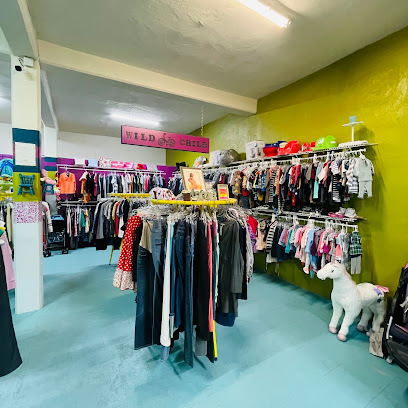
Cobalto Pottery
Discover the vibrant artistry of Cobalto Pottery in Cabo San Lucas, where handcrafted ceramics embody the spirit of Mexican culture.

Cactus Crafts and Souvenirs
Explore a vibrant selection of authentic crafts and souvenirs at Cactus Crafts and Souvenirs in Cabo San Lucas, capturing the essence of Mexican artistry.

Eclectic Array Marina
Discover unique gifts and stylish fashion at Eclectic Array Marina, Cabo San Lucas' top boutique for tourists seeking the perfect souvenir.
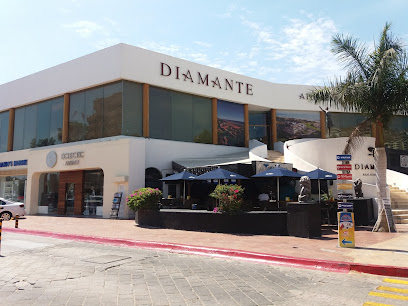
La Turquesa Jewelry & Art
Explore La Turquesa Jewelry & Art, where exquisite handcrafted jewelry meets vibrant local artistry in the heart of Cabo San Lucas.

Mr. MUSTACHE SHOP
Explore Mr. MUSTACHE SHOP in Cabo San Lucas for unique souvenirs that capture the vibrant culture and spirit of Mexico.
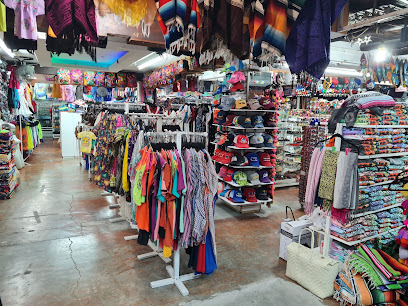
Tequila Lighthouse
Explore Cabo San Lucas's Tequila Lighthouse for authentic tequila and unique souvenirs that celebrate the heart of Mexican culture.
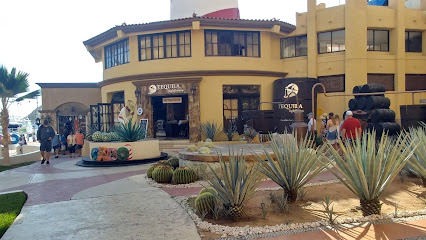
Pepita's Magic of the Moon
Discover unique handcrafted clothing and textiles at Pepita's Magic of the Moon, a boutique reflecting the vibrant culture of Cabo San Lucas.
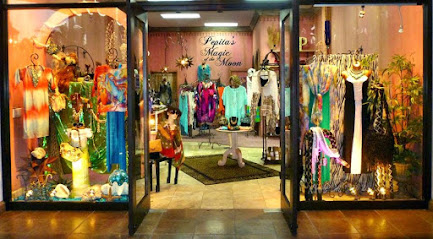
Cabostyle
Discover the ultimate beach clothing store in Cabo San Lucas, offering trendy styles for men, women, and children, along with unique local souvenirs.
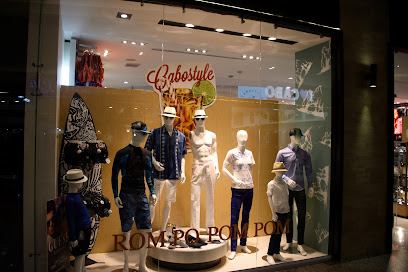
Essential bars & hidden hideouts
Mango Deck
Discover the vibrant culinary scene at Mango Deck in Cabo San Lucas, a beachside haven offering sushi, grilled delights, and breathtaking views.
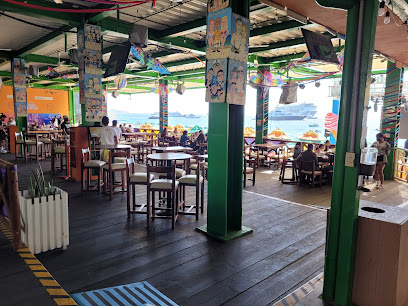
Cabo Wabo Cantina
Discover the ultimate blend of food, drinks, and nightlife at Cabo Wabo Cantina in Cabo San Lucas, a must-visit for every traveler.
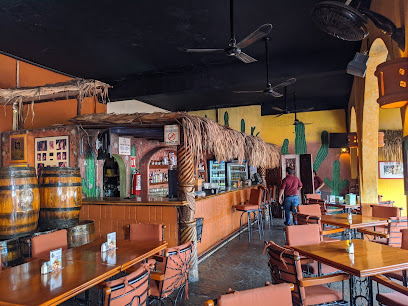
Happy Ending Cantina
Experience the vibrant nightlife and authentic Mexican cuisine at Happy Ending Cantina, a must-visit bar and restaurant in Cabo San Lucas.
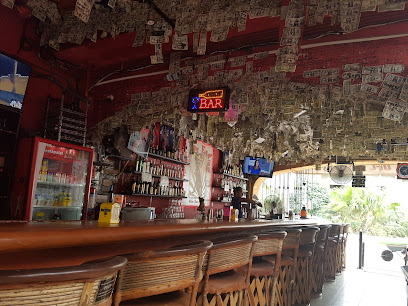
El Squid Roe - Cabo Bar & Restaurant
Discover the vibrant nightlife and delicious cuisine at El Squid Roe, Cabo San Lucas' favorite grill, bar and nightclub.
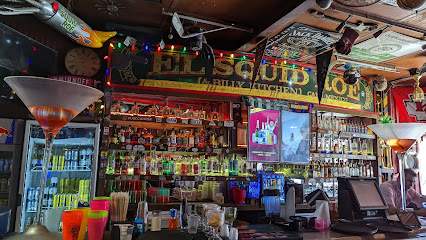
The Sand Bar
Experience the best of Cabo San Lucas at The Sand Bar, where delicious food, refreshing drinks, and relaxation await.
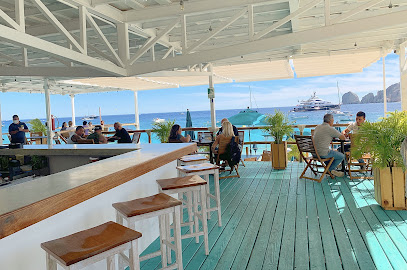
Latitude 22+ Roadhouse
Experience the vibrant flavors of Latitude 22+ Roadhouse in Cabo San Lucas, where every meal is a celebration of taste and atmosphere.
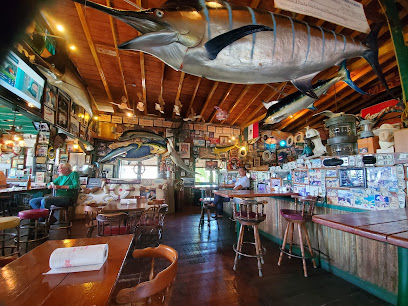
Tipsy Bar
Experience the vibrant nightlife and fantastic cocktails at Tipsy Bar, a must-visit spot in Cabo San Lucas for all travelers.
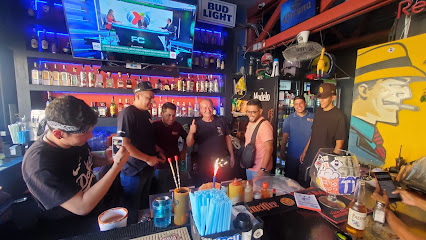
Dos Jimmys Signature Bar
Discover the fun and flavor at Dos Jimmys Signature Bar in Cabo San Lucas, where vibrant nightlife meets delicious cuisine.
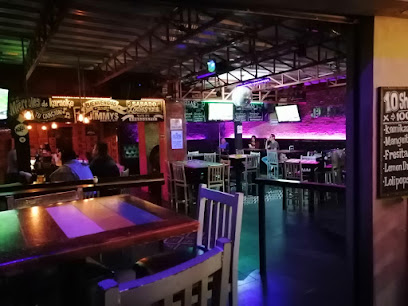
The Jungle Bar
Experience the vibrant nightlife of Cabo San Lucas at The Jungle Bar, where refreshing cocktails and a lively atmosphere await travelers.
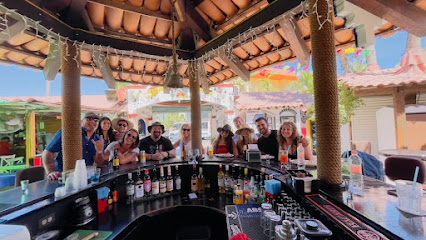
Monkey Business Bar
Experience the vibrant atmosphere of Monkey Business Bar in Cabo San Lucas, where refreshing cocktails and tasty fast food await you.

Sancho's Bar
Discover the vibrant nightlife at Sancho's Bar, where refreshing drinks and a lively atmosphere meet the beauty of Cabo San Lucas.

Uno Mas?
Experience the vibrant nightlife at Uno Mas? in Cabo San Lucas, where delicious drinks and warm hospitality await every visitor.
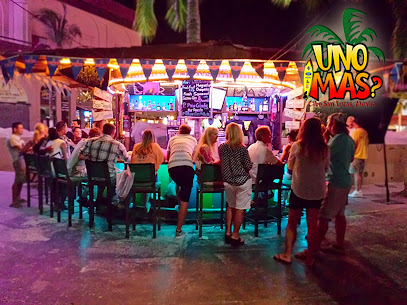
The Nowhere Bar
Experience the vibrant nightlife at The Nowhere Bar in Cabo San Lucas, where lively music and refreshing drinks create the perfect party atmosphere.
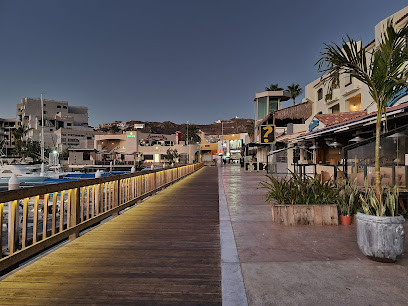
Urban Bar
Experience the vibrant nightlife of Cabo San Lucas at Urban Bar, where cocktails flow and the dance floor comes alive until dawn.
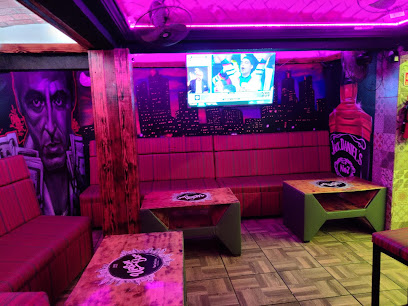
The Roof Bar and Grill
Experience breathtaking views and delightful grilled dishes at The Roof Bar and Grill in Cabo San Lucas, the perfect spot for a memorable night out.

Local Phrases
-
- HelloHola
[oh-lah] - GoodbyeAdiós
[ah-dee-ohs] - YesSí
[see] - NoNo
[noh] - Please/You're welcomePor favor/De nada
[por fah-vor/deh nah-dah] - Thank youGracias
[grah-see-ahs] - Excuse me/SorryPerdón/Lo siento
[pehr-dohn/loh see-ehn-toh] - How are you?¿Cómo estás?
[koh-moh ehs-tahs] - Fine. And you?Bien. ¿Y tú?
[byen. ee too] - Do you speak English?¿Hablas inglés?
[ah-blahs een-glehs] - I don't understandNo entiendo
[noh ehn-tee-ehn-doh]
- HelloHola
-
- I'd like to see the menu, pleaseMe gustaría ver el menú, por favor
[meh goos-tah-ree-ah vehr ehl meh-noo, por fah-vor] - I don't eat meatNo como carne
[noh koh-moh kahr-neh] - Cheers!¡Salud!
[sah-lood] - I would like to pay, pleaseMe gustaría pagar, por favor
[meh goos-tah-ree-ah pah-gahr, por fah-vor]
- I'd like to see the menu, pleaseMe gustaría ver el menú, por favor
-
- Help!¡Ayuda!
[ah-yoo-dah] - Go away!¡Vete!
[veh-teh] - Call the Police!¡Llama a la policía!
[yah-mah ah lah poh-lee-see-ah] - Call a doctor!¡Llama a un médico!
[yah-mah ah oon meh-dee-koh] - I'm lostEstoy perdido
[ehs-toy pehr-dee-doh] - I'm illEstoy enfermo
[ehs-toy ehn-fehr-moh]
- Help!¡Ayuda!
-
- I'd like to buy...Me gustaría comprar...
[meh goos-tah-ree-ah kohm-prahr...] - I'm just lookingSólo estoy mirando
[soh-loh ehs-toy mee-rahn-doh] - How much is it?¿Cuánto cuesta?
[kwahn-toh kwehs-tah] - That's too expensiveEso es muy caro
[eh-soh ehs mwee kah-roh] - Can you lower the price?¿Puede bajar el precio?
[pweh-deh bah-hahr ehl pree-seh-oh]
- I'd like to buy...Me gustaría comprar...
-
- What time is it?¿Qué hora es?
[keh oh-rah ehs] - It's one o'clockEs la una
[ehs lah oo-nah] - Half past (10)Y media
[ee meh-dee-ah] - MorningMañana
[mah-nyah-nah] - AfternoonTarde
[tahr-deh] - EveningNoche
[noh-cheh] - YesterdayAyer
[ah-yehr] - TodayHoy
[oy] - TomorrowMañana
[mah-nyah-nah] - 1Uno
[oo-noh] - 2Dos
[dohs] - 3Tres
[trehs] - 4Cuatro
[kwah-troh] - 5Cinco
[seen-koh] - 6Seis
[says] - 7Siete
[syeh-teh] - 8Ocho
[oh-choh] - 9Nueve
[nweh-veh] - 10Diez
[dyehs]
- What time is it?¿Qué hora es?
-
- Where's a/the...?¿Dónde está...?
[dohn-deh ehs-tah] - What's the address?¿Cuál es la dirección?
[kwahl ehs lah dee-rehk-syohn] - Can you show me (on the map)?¿Puedes mostrarme (en el mapa)?
[pweh-dehs mohs-trar-meh (ehn ehl mah-pah)] - When's the next (bus)?¿Cuándo es el próximo (autobús)?
[kwan-doh ehs ehl proh-ksee-moh (ow-toh-boos)] - A ticket (to ....)Un boleto (a ...)
[oon boh-leh-toh (ah ...)]
- Where's a/the...?¿Dónde está...?
History of Cabo San Lucas
-
Before the arrival of Europeans, the area now known as Cabo San Lucas was inhabited by the Pericú people. They were skilled fishers and hunters who thrived in the arid environment, utilizing the rich marine life of the Baja Peninsula for sustenance.
-
The first European to set foot in Cabo San Lucas was likely the Spanish explorer Hernán Cortés in the early 1530s. While Cortés did not establish a permanent settlement, his visit marked the beginning of European interest in the region.
-
During the late 16th and early 17th centuries, Cabo San Lucas served as a hideout for English pirates who targeted Spanish galleons transporting valuable cargo from the New World to Spain. The natural harbor provided a perfect refuge for these seafaring outlaws.
-
In the late 17th century, Jesuit missionaries began to establish missions throughout Baja California, including in the area around Cabo San Lucas. These missions aimed to convert the local indigenous populations to Christianity and integrate them into the Spanish colonial system.
-
By the mid-19th century, Cabo San Lucas had become an important stopover for American whalers. The abundant marine life, including whales, made it a strategic location for whaling ships to resupply and make repairs.
-
In the 20th century, Cabo San Lucas began to transform from a quiet fishing village into a burgeoning tourist destination. The construction of the Transpeninsular Highway in the 1970s and the development of luxury resorts and marinas spurred rapid growth and attracted visitors from around the world.
-
Cabo San Lucas hosts a variety of cultural festivals throughout the year that celebrate its rich history and vibrant community. The Festival of San Lucas, held in October, is particularly notable and features traditional music, dance, and culinary delights.
Cabo San Lucas Essentials
-
Cabo San Lucas is located at the southern tip of the Baja California Peninsula in Mexico. The nearest airport is Los Cabos International Airport (SJD), which is approximately 45 minutes away by car. Direct flights are available from major cities in the United States, Canada, and within Mexico. From the airport, you can reach Cabo San Lucas by taxi, shuttle service, or rental car.
-
Cabo San Lucas offers various transportation options including taxis, rental cars, and public buses. Taxis are abundant but can be expensive, especially for long distances. Rental cars provide flexibility for exploring the area at your own pace. Public buses are an economical option and connect major areas; however, they may not always be the most convenient for tourists unfamiliar with the routes. Ride-sharing services like Uber are also available.
-
The official currency in Cabo San Lucas is the Mexican Peso (MXN). U.S. dollars are widely accepted, especially in tourist areas, but it’s advisable to carry pesos for smaller purchases and local shops. Credit and debit cards are accepted in most hotels, restaurants, and larger stores. ATMs are readily available, but using those inside banks or well-lit areas is recommended for safety.
-
Cabo San Lucas is generally safe for tourists, but it's important to exercise standard precautions. Avoid walking alone at night in poorly lit or unfamiliar areas. Be cautious in areas like the downtown nightlife district, where pickpocketing can occur. Leave valuables in your hotel safe and avoid displaying large amounts of cash. Stick to well-traveled areas and use reputable transportation services.
-
In case of emergency, dial 911 for police, fire, or medical assistance. The Red Cross (Cruz Roja) also provides emergency medical services. It is highly recommended to have travel insurance that covers medical emergencies. For minor health issues, there are several pharmacies where you can purchase over-the-counter medications. The local hospital, Hospital H+ Los Cabos, provides comprehensive medical services.
-
Fashion: Do dress in lightweight, breathable clothing due to the warm climate. Avoid wearing overly revealing clothing, especially when visiting local communities. Religion: Do respect local customs and religious practices. When visiting churches, dress modestly and refrain from loud conversations. Public Transport: Do use public buses for affordable travel, but don't expect them to run on a strict schedule. Give up your seat to elderly or pregnant passengers. Greetings: Do greet people with a friendly 'Hola' or 'Buenos días'. A handshake is common in formal settings. Eating & Drinking: Do try local cuisine and street food, but avoid drinking tap water. Don't refuse hospitality as it may be considered rude.
-
To experience Cabo San Lucas like a local, visit the local markets such as Mercado Municipal for fresh produce and handmade goods. Enjoy a traditional Mexican breakfast at a local café. Engage with locals who are often happy to share tips about lesser-known attractions. Do not miss the opportunity to explore the natural beauty of Land's End and the Arch of Cabo San Lucas, either by boat or kayak. For a more authentic experience, try to learn a few basic Spanish phrases.
Trending Landmark in Cabo San Lucas
-
The Arch of Cabo San Lucas
-
Plaza Mijares
-
Villa Del Palmar Beach Resort & Spa Cabo San Lucas
-
Plaza Bonita
-
Envatours Cabo
-
Casa Dorada Resort & Spa
-
Cultural Pavilion of the Republic
-
Cabo San Lucas Cruise Port
-
Cerro de la Z
-
Cabo Blue Boat
-
Whale Watch Cabo
-
Museum of Natural History in Cabo San Lucas
-
East Cape Beach
-
Sea Cabo Activities
-
Mt. Solmar
Nearby Cities to Cabo San Lucas
-
Things To Do in Puerto Vallarta
-
Things To Do in Guadalajara
-
Things To Do in Ixtapa-Zihuatanejo
-
Things To Do in Guanajuato
-
Things To Do in Bisbee
-
Things To Do in San Miguel de Allende
-
Things To Do in Queretaro
-
Things To Do in Monterrey
-
Things To Do in El Paso
-
Things To Do in Tucson
-
Things To Do in Las Cruces
-
Things To Do in White Sands
-
Things To Do in Laredo
-
Things To Do in Truth or Consequences
-
Things To Do in Chandler











